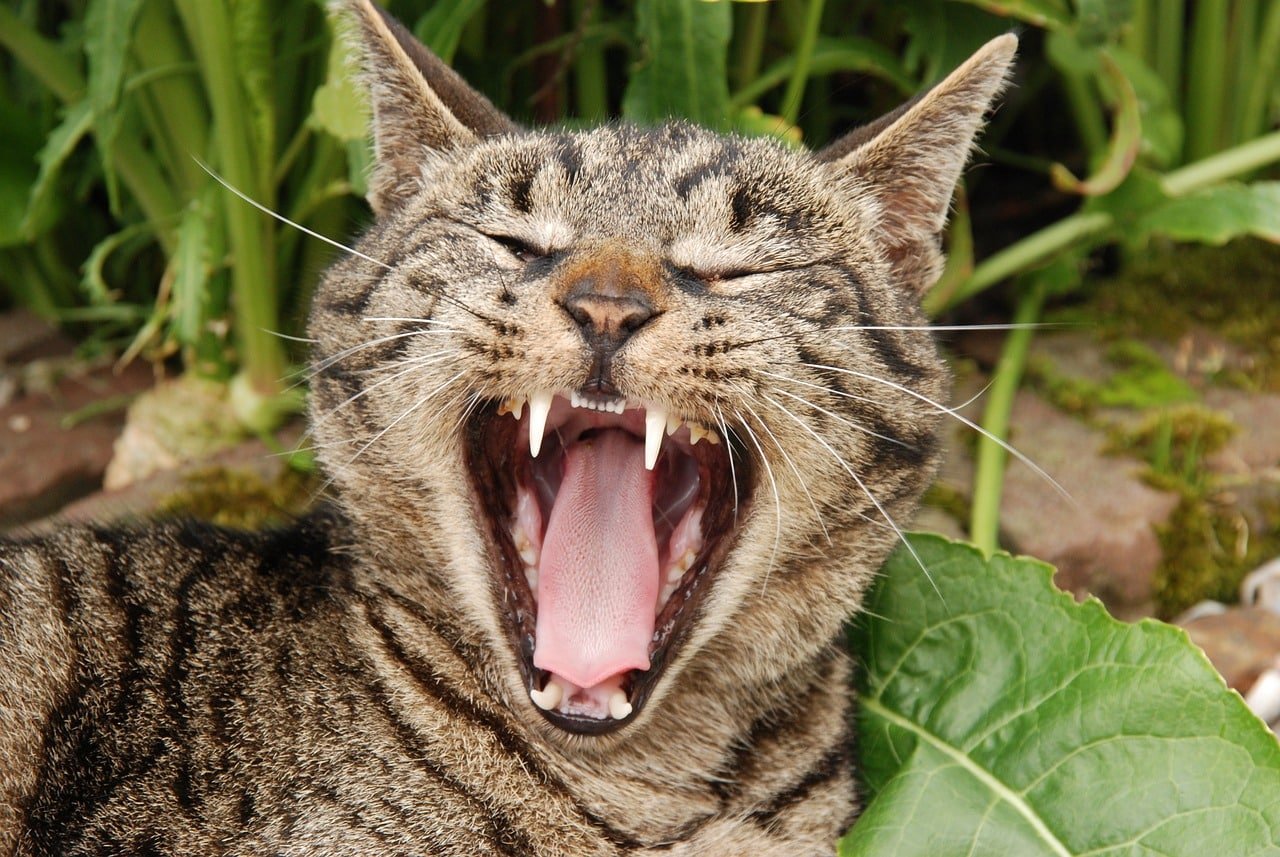As a cat owner, it is essential to understand the structure and function of your feline friend’s teeth, particularly the bottom teeth, which play a crucial role in their overall health. This comprehensive guide explores the anatomy of a cat’s bottom teeth, their functions, common dental problems, and tips for maintaining your cat’s dental health.
Anatomy of a Cat’s Bottom Teeth
Cats have a total of 30 permanent teeth, with 16 located in the upper jaw and 14 in the lower jaw. The bottom teeth are divided into three main types: incisors, canines, and premolars. Each type of tooth has a specific function that contributes to your cat’s ability to eat, groom, and defend itself.
1. Incisors
- Number: 6 (three on each side of the bottom jaw)
- Location: At the very front of the lower jaw
- Structure: Small and sharp
- Function: Incisors are primarily used for grooming, picking up small objects, and fine biting. Cats use these teeth to nibble and remove debris from their fur.
2. Canines
- Number: 2 (one on each side of the bottom jaw)
- Location: Next to the incisors
- Structure: Long, pointed, and curved
- Function: Canines, also known as fangs, are used for grasping, piercing, and holding onto prey. They are essential for delivering a killing bite to small animals.
3. Premolars
- Number: 6 (three on each side of the bottom jaw)
- Location: Behind the canines
- Structure: Sharp and serrated
- Function: Premolars are used for shearing meat and grinding food. They play a crucial role in a cat’s ability to process and digest its diet.
Functions of Cat’s Bottom Teeth
Understanding the specific functions of each type of bottom tooth helps in recognizing the importance of dental health for your cat. Here’s how these teeth contribute to your cat’s daily activities:
1. Grooming
Cats are meticulous groomers, and their incisors play a significant role in this behavior. By using their incisors, cats can nibble and remove dirt, parasites, and loose fur from their coat. This grooming process helps maintain their hygiene and overall health.
2. Eating and Nutrition
The bottom teeth, particularly the canines and premolars, are essential for a cat’s carnivorous diet. Canines are used to capture and kill prey, while premolars help in tearing and grinding meat. This dental structure enables cats to efficiently consume and digest their food, ensuring they receive the necessary nutrients.
3. Defense and Hunting
In the wild, cats rely on their teeth for hunting and self-defense. The sharp canines and premolars are vital for subduing prey and protecting themselves from predators or rivals. Even domestic cats retain these instincts and use their teeth during play and exploration.
4. Social Interaction
Teeth play a role in social interactions among cats. Gentle nibbles and grooming are ways cats bond with each other. Conversely, showing teeth or using them defensively can indicate aggression or discomfort.
Common Dental Problems in Cat’s Bottom Teeth
Just like humans, cats can experience dental problems that affect their overall health and well-being. Here are some common issues that can affect the bottom teeth and how to address them:
1. Periodontal Disease
Periodontal disease is one of the most common dental issues in cats. It involves the inflammation and infection of the gums and the supporting structures of the teeth.
- Symptoms:
- Red, swollen gums
- Bad breath
- Difficulty eating
- Loose teeth
- Prevention and Treatment: Regular dental check-ups, professional cleanings, and a good oral hygiene routine at home can help prevent periodontal disease. Early detection and treatment are crucial to avoid severe complications.
2. Tooth Resorption
Tooth resorption is a painful condition where the structure of the tooth breaks down and is reabsorbed by the body. It often affects the premolars and can be challenging to detect without a veterinary examination.
- Symptoms:
- Difficulty eating
- Drooling
- Visible tooth damage or loss
- Behavioral changes such as hiding or reduced activity
- Prevention and Treatment: Regular veterinary dental examinations can help catch this condition early. Treatment may involve extracting the affected teeth to relieve pain and prevent further issues.
3. Gingivitis
Gingivitis is the inflammation of the gums, often caused by plaque buildup. It can lead to more severe periodontal disease if left untreated.
- Symptoms:
- Red, swollen gums
- Bad breath
- Bleeding gums, especially when eating or chewing
- Prevention and Treatment: Maintaining a regular brushing routine and using dental products like treats and water additives can help prevent gingivitis. Regular veterinary check-ups are also essential.
4. Fractured Teeth
Fractured teeth can result from trauma, such as chewing on hard objects or accidents. This condition can be painful and lead to further dental complications if not treated.
- Symptoms:
- Visible cracks or breaks in the teeth
- Pain when eating or touching the affected area
- Swelling or inflammation around the fracture
- Prevention and Treatment: Avoid giving your cat hard toys or bones, and seek veterinary care if a fracture occurs to assess and treat the damage appropriately.
Tips for Maintaining Your Cat’s Dental Health
Proper dental care is crucial for keeping your cat’s bottom teeth and overall oral health in good condition. Here are some tips to help you maintain your cat’s dental hygiene:
1. Regular Veterinary Check-ups
Schedule regular veterinary check-ups to monitor your cat’s dental health. Your vet can perform professional cleanings and check for signs of dental issues that may require treatment.
- What to Expect During a Dental Check-Up:
- Examination of teeth and gums
- Professional cleaning to remove plaque and tartar
- Possible X-rays to check for issues below the gum line
- Treatment for any detected dental issues
2. Tooth Brushing
Brushing your cat’s teeth regularly helps prevent plaque and tartar buildup. Use a cat-specific toothbrush and toothpaste, and gradually introduce the brushing routine to make your cat comfortable.
- How to Brush Your Cat’s Teeth:
- Start by gently lifting your cat’s lips and rubbing their teeth with your finger.
- Gradually introduce the toothbrush and toothpaste.
- Brush in small, circular motions, focusing on the gum line.
3. Dental Treats and Toys
Provide dental treats and toys designed to reduce plaque and tartar buildup. These products can complement regular brushing and professional cleanings.
- Examples:
- Dental chews that promote teeth cleaning
- Toys that encourage natural chewing behavior
4. Healthy Diet
A balanced diet is essential for maintaining your cat’s overall health, including their dental health. Some cat foods are specially formulated to support dental health by reducing plaque and tartar buildup.
- Food Choices:
- Dry kibble that promotes teeth cleaning
- Dental-specific foods that help manage plaque buildup
5. Water Additives and Supplements
There are various dental supplements and water additives available that can help maintain your cat’s dental health. These products can help reduce plaque and tartar buildup and improve overall oral hygiene.
Recognizing Signs of Dental Issues
Being vigilant about your cat’s dental health means recognizing the signs of potential issues early. Here are some common signs that your cat may have dental problems:
1. Bad Breath
Persistent bad breath can be a sign of dental disease. While some odor is normal, especially after eating, a strong, foul smell can indicate an underlying issue.
2. Difficulty Eating
If your cat is having trouble eating, chewing on one side of the mouth, or dropping food, it could be due to dental pain or discomfort.
3. Drooling
Excessive drooling can be a symptom of dental disease or a foreign object stuck in the mouth.
4. Behavioral Changes
Changes in behavior, such as increased aggression, hiding, or reluctance to be touched around the mouth, can indicate dental pain.
5. Visible Signs
Look for visible signs such as red, swollen gums, loose teeth, or any unusual lumps or bumps in the mouth.
The Role of Diet in Dental Health
A proper diet plays a significant role in maintaining your cat’s dental health. Here are some dietary considerations:
1. Dry vs. Wet Food
- Dry Food: Dry kibble can help reduce plaque buildup due to its abrasive texture. However, it should not be the sole method of dental care.
- Wet Food: While wet food is beneficial for hydration, it does not provide the same abrasive action as dry food. A combination of both can be ideal.
2. Dental-Specific Foods
Some cat foods are formulated specifically to promote dental health. These foods contain ingredients that help reduce plaque and tartar buildup and are often designed to be more abrasive to clean teeth as the cat chews.
3. Supplements and Additives
There are various dental supplements and water additives available that can help maintain your cat’s dental health. These products can help reduce plaque and tartar buildup and improve overall oral hygiene.
Tips for Making Dental Care Easier
Dental care can sometimes be challenging for both you and your cat. Here are some tips to make the process smoother:
1. Start Young
Introduce dental care routines early in your cat’s life. Kittens are more adaptable to new routines, and starting early can help establish lifelong habits.
2. Use Positive Reinforcement
Reward your cat with treats and praise during and after dental care sessions. This helps create a positive association with dental hygiene.
3. Be Patient
Dental care takes time and patience. Start slowly and gradually increase the duration and frequency of dental care activities.
Conclusion
Understanding the anatomy and function of your cat’s bottom teeth is essential for maintaining their overall health. Regular veterinary check-ups, proper dental hygiene, and a balanced diet are key to preventing dental problems and ensuring your cat’s teeth remain strong and healthy. By being vigilant and proactive about your cat’s dental care, you can help them lead a healthier, happier life.
- Can Cats Without Teeth Eat Dry Food?
- Cats Without Teeth
- Do Cats’ Teeth Need Special Care?
- Why Do Cats Rub Their Teeth on You?
- How to Keep Your Cat’s Teeth Clean Without Brushing:
- Why Do Cats Grind Their Teeth?
- Why Do Cats Chatter Their Teeth?
- When Do Cats Lose Their Baby Teeth?
- How Often Do Cats Need Dental Cleaning?
- Do Cats’ Broken Teeth Grow Back?
- Cat’s Bottom Teeth: Anatomy, Function, and Dental Care
- How Many Permanent Teeth Do Cats Have?
- How Many Canine Teeth Do Cats Have?
- How Many Front Teeth Do Cats Have?
- How Many Teeth Do Adult Cats Have?
- How Many Teeth Do Cats Have?
Discover more from EMMOCEB
Subscribe to get the latest posts sent to your email.






